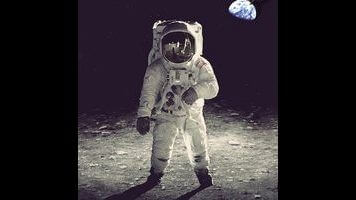Special effects can’t save Operation Avalanche’s tired conspiracy theory

Of all the conspiracy theories that have amassed a sizable number of gullible believers over the past half century, that NASA faked the moon landing has to be the dumbest. This hasn’t stopped filmmakers from building paranoid thrillers around the idea, though. Less than a decade after Apollo 11, Capricorn One (1977) imagined a team of astronauts being hunted down by government assassins, lest their existence expose the truth about a fictitious manned flight to Mars. Almost 40 years later, the mock documentary Operation Avalanche tells more or less the same story, but from the point of view of the geek squad hired to convince the world that Neil Armstrong really did take a giant leap for mankind. Alas, while modern technology allows for impressive, convincing effects work on a comparatively tiny budget, the basic concept itself hasn’t improved with age. Clever ideas are still in short supply.
Frankly, the behind-the-scenes story is more compelling than the one that plays out on screen. Using their own names, director Matt Johnson (whose previous feature, 2013’s The Dirties, was in much the same vein) and some friends/confederates successfully passed themselves off as a film crew making a documentary about the original Apollo missions, thereby gaining access to NASA and a whole lot of background verisimilitude. Scripted or semi-improvised scenes then show Johnson and the others gradually talking NASA into letting them fake the moon landing, as it becomes clear that they’ll fail to meet the late President Kennedy’s goal of doing so before the end of the decade. Predictably, their inside knowledge of one of the biggest cover-ups in history makes them a liability, and soon members of the team are dying under mysterious circumstances, while Johnson attempts to use the evidence as a blackmail tool.
Trouble is, all of Operation Avalanche’s considerable ingenuity has been expended on making the film look “real,” with none apparently left over to enhance its remarkably mundane narrative. When the team visits the set of 2001: A Space Odyssey, Gump-style compositing creates the illusion of one of them getting an autograph from the real Stanley Kubrick; a climactic car chase and shoot-out, complete with high-speed maneuvers and bullet holes pocking the vehicle’s windows, merits comparison with similar set pieces in hugely expensive Hollywood action movies. But such diversions can’t mask the project’s overall dearth of creativity, nor justify its resuscitation of an idea so hoary that a previous version starred O.J. Simpson. (If nothing else, Johnson should consider hiring a more charismatic actor than himself to play the lead in these pictures, as his lightweight nerd smarm makes Michael Showalter look like vintage Harrison Ford.) In terms of sheer technique, the film has been executed about as ably as one could desire. All that’s missing is a compelling reason for it to exist.